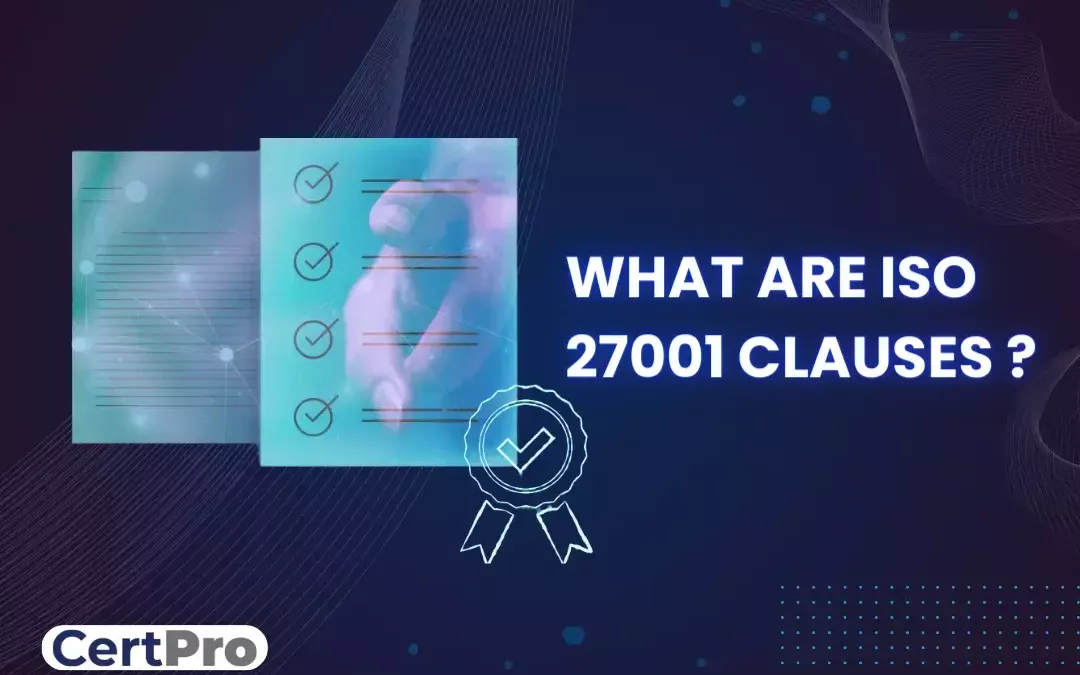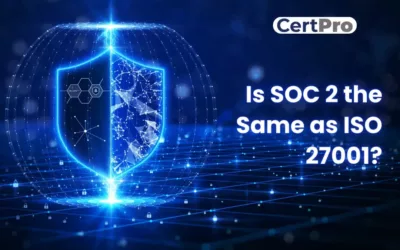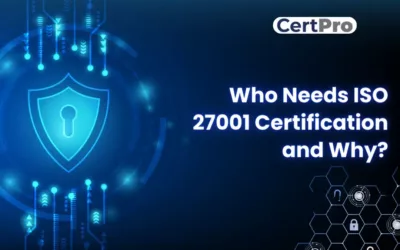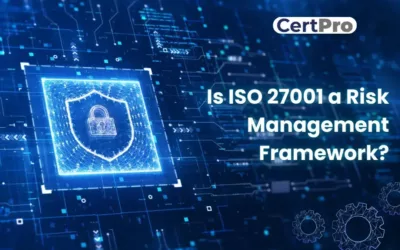ISO 27001 clauses, a worldwide recognized standard, play an essential role in helping enterprises develop strong information security management systems (ISMS). This organized framework ensures a thorough defense against potential threats and weaknesses by offering a methodical approach to managing and protecting sensitive information.
Basically, the standard is structured into Clauses and Security Controls (Annex A), which together form the necessary requirements for businesses looking to comply with ISO 27001. Consider these ISO 27001 clauses to be the core pillars of your ISMS, enabling a customizable paint-by-numbers system. Organizations can customize their strategy within this flexible framework by choosing colors that correspond with their individual business interests and risk tolerance levels.
Clauses 4–10, which include the fundamental requirements for businesses aiming to comply with ISO/IEC 27001 standards, are the focus of our investigation. Which direct enterprises to meet strict requirements and smoothly integrate them with their operational goals and risk management plans. Organizations can enhance their information security and achieve worldwide compliance by focusing on five essential components that also suit their specific business environment.
THE STRUCTURE OF ISO 27001
There are two main components to the ISO 27001 standard:
1. ISO 27001 mandatory clauses: The ISO 27001 clauses first section has 11 clauses (0–10), the most important of which are compliance-focused and fall between 4 and 10. To achieve ISO 27001 compliance and follow globally accepted information security management standards, a business needs to put these particular clauses into practice.
2. Annex A controls: The most recent edition of ISO 27001 includes 93 security controls, allowing businesses to carefully select and integrate them into their security risk assessment processes. This extensive collection enables firms to adjust their approach to unique threats and vulnerabilities while adhering to worldwide information security requirements.
WHAT ARE THE ISO 27001 CLAUSES?
1. Scope: This clause defines the covered information assets and procedures to clearly define the Information Security Management System’s (ISMS) scope. It is essential to make sure that the organization’s goals and limitations are thoroughly documented, since this creates a clear framework for efficient information security management.
2. Normative References: These ISO 27001 clauses refer to additional standards that provide information security guidelines. It makes a point of highlighting the standards’ identification and explaining how applicable and relevant they are to the organization. This guarantees a thorough integration of relevant rules to improve the Information Security Management System’s efficacy.
3. Terms and Definitions: Important words and definitions related to information security management are provided in this section. Its goal is to ensure that all parties involved in information security management have a common knowledge of language, allowing for consistent and clear communication.
4. Context of the Organization: This ISO 27001 clause mandates businesses to determine the internal and external issues that could impact their information security goals. In doing so, it helps businesses understand the risks connected with their operating environment and promotes a proactive approach to resolving possible information security issues.
5. Leadership: Information security requires a strong commitment from top management. They are responsible for defining roles and responsibilities, creating policies, and making sure that the resources needed are available, among other things, as stated in this clause.
6. Planning: This clause mandates enterprises to perform a comprehensive analysis of the opportunities and hazards related to information security. Accomplishing the set goals requires defining objectives, creating an information security risk management procedure, and creating a strategic strategy. By adopting a holistic strategy, it is ensured that information security risks are managed methodically and that opportunities are taken advantage of.
7. Support: For efficient information security management, this clause emphasizes how crucial it is to guarantee that there are enough resources, expertise, awareness, communication, and documentation. The clause guarantees the establishment of the foundations required to sustain a strong and efficient information security management system inside the business by highlighting these essential components.
8. Operation: This clause focuses on putting procedures and controls in place to manage and reduce information security threats. It guarantees a thorough strategy for protecting information assets and proactively addressing any security threats within the company by encompassing crucial areas like risk assessment, access control, and incident management.
9. Performance Evaluation: This clause emphasizes how important it is for businesses to keep an ongoing eye on, assess, measure, and appraise the performance of their information security management system (ISMS). It explains how to guarantee continued efficacy and compliance with information security goals by putting performance indicators into place, carrying out audits, and holding management reviews.
10. Improvement: This ISO 27001 clauses emphasizes the continual improvement principle, which is a cornerstone of ISO 27001 standards. It emphasizes the significance of putting preventative and remedial measures into place, as well as a dedication to continuous evaluation and modification of the information security management system (ISMS). This strategy seeks to continuously improve the ISMS’s efficacy in handling changing security issues and upholding peak performance.
The systematic approach of ISO 27001 guarantees that entities methodically tackle information security risks, safeguard sensitive data, and adjust to evolving threats and circumstances. By adhering to the clauses in ISO 27001, entities can build a resilient information security management system, showcasing their commitment to securing information assets. Attaining ISO 27001 certification reflects a commitment to upholding top-tier information security standards, a critical aspect in the contemporary digital environment.
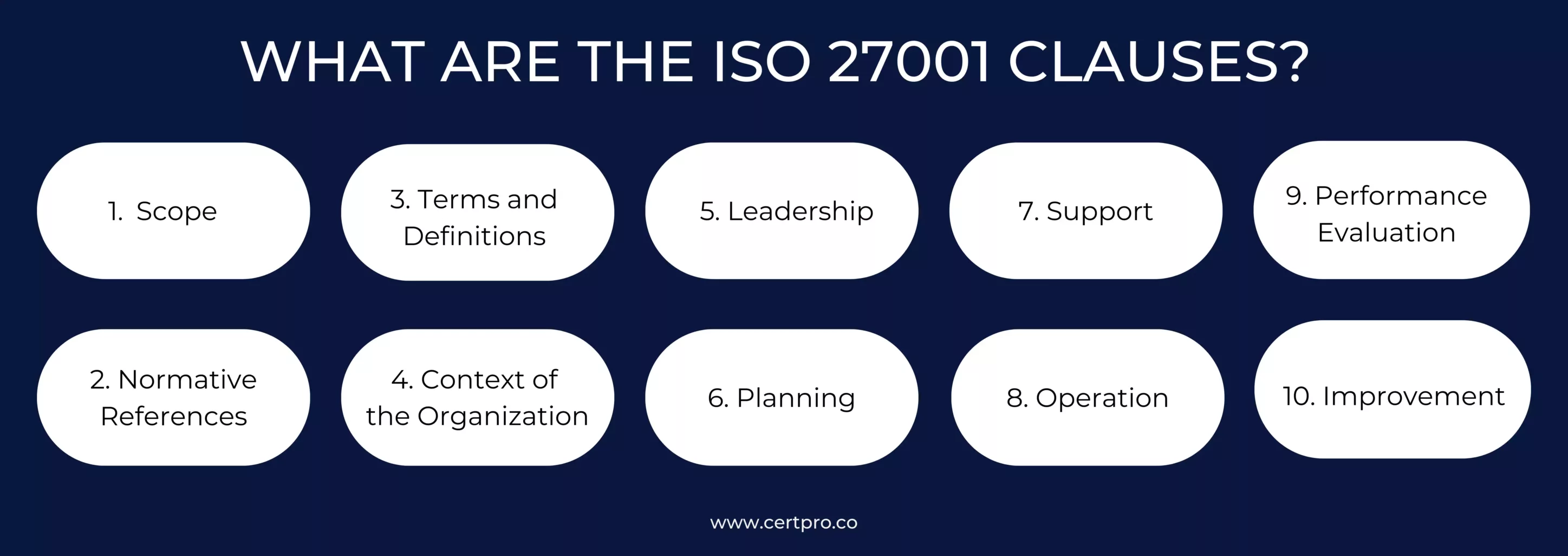
ISO 27001 MANDATORY CLAUSES
1. Clause 4: Context of the Organization: The process of developing an Information Security Management System (ISMS) involves laying the groundwork for comprehending, executing, and recording procedures in compliance with ISO standards. This procedure forms the foundation for the organization’s safe and effective operation by incorporating precise definitions into the ISMS. Investigating this element is crucial, requiring consideration of elements such as industry-specific requirements, client and competitor data, business effects, and stakeholders. These factors are crucial in guaranteeing the efficacy of the ISMS and enabling it to adjust to the unique requirements of the business setting. This all-encompassing strategy, at its core, guarantees that the ISMS is in perfect harmony with the ever-changing terrain of organizational requirements and regulatory norms.
2. Clause 5: Leadership and Management: A clear definition of roles and leadership structures is essential to the adoption of a successful information security management system (ISMS). Establishing a simplified strategy for ISMS control becomes difficult for a business in the absence of thorough input from the pertinent stakeholders.
As per ISO 27001, the active participation of individuals is vital in averting security breaches in enterprises. The leadership must intentionally infuse this idea into the company’s culture. By doing this, an organization’s proactive approach to information security is embedded, creating a secure environment and guaranteeing that all employees are essential to the upkeep and improvement of the ISMS. This blending of cultures reinforces the commitment to strong security procedures at every level of the company.
3. Clause 6: Planning: Thorough planning and clearly defined procedures are essential for effective risk mitigation under ISO 27001. It’s imperative to get planning right from the start because it’s subject to audits and inspections. The definition of business objectives is crucial and should be quantifiable and in line with the needs of monitoring. This makes it possible to measure return on Investment (ROI), which offers insightful data on how well security measures are working, and it also makes successful reporting in accordance with business objectives possible.
To ensure that choices are conveyed throughout the company, inclusive planning including all stakeholders is essential. The proper execution of upcoming procedures is ensured by this all-encompassing strategy, which also promotes a cooperative atmosphere that raises the Information Security Management System’s overall effectiveness (ISMS).
4. Clause 7 – Support: Effective teamwork and communication are the cornerstones of a successful ISO 27001 approach, as is clear. Establishing an Information Security Management System (ISMS) that is secure and efficient is the main objective. It becomes essential to provide ongoing support in order to maintain the structure and handle obstacles. This emphasizes how important it is to have good documentation because it is a basic necessity that is stressed in particular phrases.
Since documentation is scrutinized during audits, it becomes especially important when supporting processes and activities. Maintaining current documentation is crucial for proving compliance with protocols and guaranteeing that support systems are strong and in line with ISMS goals.
5. Clause 8 – Operations: This clause focuses on putting procedures and controls in place to manage and lessen the risks associated with information security. It covers several important topics, including incident management, access control, and risk assessment, among others. The focus is on creating a strong framework that methodically identifies possible risks, controls access to confidential data, and efficiently handles security incident response and management. Through the integration of these measures, the business can strengthen its Information Security Management System, guaranteeing a proactive and all-encompassing strategy for protecting information assets against possible threats and weaknesses.
6. Clause 9: Operational Performance Assessments: This clause mandates that procedures be put in place that are intended to monitor and maintain performance in a variety of areas. It includes everything from measuring overall operational efficiency to assessing staff engagement through the use of an Information Security Management System (ISMS). Outlining procedures that properly specify the scope adapted to the unique needs of the organization is an essential prerequisite. This section also covers managing internal audit procedures and making sure that methodical evaluations are carried out to track and improve the efficiency of the ISMS. By implementing these steps, the company creates a structure for ongoing development and synchronizes its activities with the main objectives of efficiency and information security.
7. Clause 10 – Improvement: Although ISO 27001 mandates that an Information Security Management System (ISMS) must be operational to be certified, it also acknowledges the necessity of ongoing development. This specific clause demands the creation of a written procedure for monitoring modifications, suggestions, and any other actions related to the ISMS. The goal is to create a dynamic system that not only satisfies present requirements but also changes in response to new developments and difficulties. Organizations may maintain the adaptability, effectiveness, and alignment of their information security management system (ISMS) with the constantly evolving requirements of information security by adopting a methodical approach to documenting and implementing improvements.
WHO IS RESPONSIBLE FOR IMPLEMENTING ISO 27001 CONTROLS?
One common misunderstanding is that the IT department is the only one accountable for putting ISO 27001 measures into place. In contrast, only a fraction of these controls are technological in nature; the rest deal with organizational issues, physical security, human resources, and legal protection.
An organization’s departments and other stakeholders should work together to execute the Annex A controls. The size, complexity, and current security posture of the organization are some of the variables that affect who is specifically at fault. Acknowledging the heterogeneous character of these controls highlights the necessity of an all-encompassing and interdisciplinary strategy to guarantee efficient compliance with ISO 27001 guidelines.
ISO 27001:2002: UPDATES TO ANNEX A
Companies must identify potential threats to information security and then choose suitable methods to reduce those risks, according to the comprehensive framework provided by the worldwide information security standard ISO 27001. Annex A, a crucial component of the standard, describes the entire set of procedures associated with ISO 27001 requirements. Annex A comprises 114 controls in all, logically separated into 14 distinct domains. This systematic approach ensures that businesses have a flexible and comprehensive strategy to secure their confidential information and information assets, and it facilitates the examination of various information security risks.
FAQ
What is the significance of clauses in ISO 27001 in information security management systems (ISMS)?
Clauses in ISO 27001 serve as the fundamental building blocks of ISMS, providing an organized framework for enterprises to manage and protect sensitive information. The clauses act as core pillars, allowing customization within a flexible framework to align with individual business interests and risk tolerance levels.
What are the two main components of the ISO 27001 standard, and how do they contribute to compliance?
The ISO 27001 standard consists of ISO 27001 mandatory clauses: (0–10) and Annex A controls. Mandatory clauses, particularly 4–10, are compliance-focused and essential for businesses aiming to adhere to ISO/IEC 27001 standards. Annex A controls offer a selection of 93 security controls for businesses to integrate into their security risk assessment processes, enabling adaptation to unique threats while complying with global information security requirements.
What does ISO 27001 Clause 4 (Context of the Organization) entail, and why is it crucial for ISMS development?
ISO 27001 Clause 4 focuses on understanding internal and external factors impacting information security goals. It requires businesses to consider industry-specific requirements, stakeholder interests, and other elements crucial for ISMS efficacy. This clause ensures alignment with changing organizational requirements and regulatory norms.
Why is ongoing performance evaluation essential according to ISO 27001 Clause 9?
Clause 9 mandates the ongoing monitoring and evaluation of ISMS performance. It emphasizes the importance of implementing performance indicators, conducting audits, and holding management reviews to ensure continued efficacy and compliance with information security goals.
What does ISO 27001 Clause 10 (Improvement) entail, and why is it a cornerstone of the standard?
Clause 10 emphasizes the continual improvement principle, requiring the establishment of procedures for monitoring changes, suggestions, and actions related to the ISMS. This clause ensures the adaptability, effectiveness, and alignment of the ISMS with evolving information security requirements.

About the Author
SUBBAIAH KU
Subbaiah Ku is the Regional Director for CertPro in Oman, bringing a wealth of expertise in process and system auditing. As a seasoned lead assessor, Subbaiah is dedicated to ensuring the highest standards in compliance and security. His unique blend of technical acumen, rooted in Mechanical Engineering, is complemented by a diverse range of certifications and extensive training.
IS SOC 2 THE SAME AS ISO 27001?
In today's digital landscape, ensuring the safeguarding of client data is paramount for businesses. Adhering to recognized compliance standards is vital to meeting this demand. ISO 27001 vs. SOC 2 represent two prominent benchmarks in the realm of data security with...
WHO NEEDS ISO 27001 CERTIFICATION AND WHY?
The esteemed ISO 27001 security framework is designed to evaluate the effectiveness of an organization's Information Security Management System (ISMS) in safeguarding its data. Obtaining ISO 27001 certification is a practical way for a corporation to demonstrate its...
IS ISO 27001 RISK ASSESSMENT VITAL FOR SECURITY MEASURES?
The ISO 27001 standard provides a framework for information security, highlighting the importance of a thorough risk assessment procedure. Organizations use the methodical and complex ISO 27001 risk assessment process to identify and assess information security...

